Хаас за Русия
Ромен Грожан:
The same tire compounds you ran in the most recent race in Singapore are the same compounds you’ll have in Sochi. It seemed that getting a handle on how each of these compounds would perform proved difficult. Despite your struggles in Singapore, do you feel that experience has you better prepared for Sochi?
Yes and no. I think we had good pace, which we showed in qualifying. We had good pace on every compound. Saying that, the problem in Singapore was qualifying in the top-10 with the hypersoft, which didn’t last very long in the race compared to the ultrasoft and the softs. It made the strategy very complicated. In Sochi, we’ll need to see how the hypersoft performs. It’s a really good tire on one lap, but what’s the tire life? We’ll need to decide if we want to go through to Q3 in qualifying, or if there’s anything we should do differently. You don’t want to be qualifying in the top-10 and then not have a chance to score points in the race.
Heading into Singapore, there was some trepidation because it was a tight and twisty track that didn’t suit the Haas VF-18 as well as other circuits. Does the Sochi Autodrom allow for a return to the style of racetrack that better suits your racecars?
In Singapore we qualified eighth, almost best of the rest. I think the car worked very well, which is very encouraging after a difficult Monaco. Sochi should be a good track for us. It’s key to get the tires to work in Russia, and that’s something we haven’t done very well in the past. I’m sure this year we’re going to be much better. I’m very much looking forward to getting there and enjoying it.
The fight for the top of the midfield seems to have ramped up of late. Renault is fourth and Haas F1 Team isn’t that far behind in fifth, but McLaren and Force India have cut the gap to each of you. How would you describe the current midfield battle?
It’s very exciting, very interesting. A lot can happen. It’s very open. I think it’s going to go until the end of the year. It’s great fun. We’re going to do everything we can to definitely get that fourth position in the constructors’ championship.
What is your favorite part of the Sochi Autodrom and why?
I do quite like the fast turn three. It’s a very high-speed corner, flat out, then just going into turn four, coming out of the corner, then braking straight away for turn four. I think the corners flow into each other quite nicely. It’s a good track to drive.
Is there a specific portion of the Sochi Autodrom that is more challenging than other aspects of the track?
Yes, there’s the braking after the second straight-line DRS zone. You’re braking with g-forces then going underneath the bridge. It’s very twisty and the tires are having a tough time around there. That’s where you really need to get a good balance.
Explain a lap around the Sochi Autodrom.
There’s a very long straight line to start, followed by big braking into a right-hand side corner, taken in third or fourth gear. Then you have the famous turn three, which is flat out in qualifying. Then you go into turn four – you can carry quite good speed into it. The next few corners are very similar. They flow nicely and you enjoy some good speed in the car. Then you go on the backstraight, again with very tricky braking. Then the last section of the track is much slower, in particular the last two corners. The pit entry is also a bit tricky. The finish line is straight at the last corner, so depending if you’re on a qualifying lap or a racing lap, each one is different.
The Sochi Autodrom runs around the Olympic Village, as Sochi hosted the 2014 Winter Olympics. Do you follow the Olympics when they take place? Do you have a preference for either the Winter or Summer Olympics, and is there a specific event you like to watch?
I do follow the Olympics. My grandfather competed twice in the Olympic Games as a skier. The Olympics are something very important to my family. It’s always a pleasure to see where the flame is and sharing in that spirit.
Кевин Магнусен: The same tire compounds you ran in the most recent race in Singapore are the same compounds you’ll have in Sochi. It seemed that getting a handle on how each of these compounds would perform proved difficult. Despite your struggles in Singapore, do you feel that experience has you better prepared for Sochi?
The hypersoft tires were slightly difficult to get working in Singapore. Sochi’s obviously a different track, and the temperatures will be different as well. It’ll most likely be a different story there.
Heading into Singapore, there was some trepidation because it was a tight and twisty track that didn’t suit the Haas VF-18 as well as other circuits. Does the Sochi Autodrom allow for a return to the style of racetrack that better suits your racecars?
I think Sochi is a pretty good track. It’s not a low-speed track as such, but it’s not a high-speed track either. It’s got very wide, medium-speed corners. It’s quite a fun track, and good for overtaking and racing. I think we should have a good race there.
The fight for the top of the midfield seems to have ramped up of late. Renault is fourth and Haas F1 Team isn’t that far behind in fifth, but McLaren and Force India have cut the gap to each of you. How would you describe the current midfield battle?
The battle is still extremely tight. Every point counts. The rest of the season will be very tough. We have a slight gap to close to Renault, but we’ll do everything we can to do that. As always, consistency will be key.
In your first two starts in Sochi, you made up significant ground to score points – 11th to fifth in 2014 and 17th to seventh in 2016 for a total of 16 positions. How did you do it, and was one race drastically different from the other?
I know in 2016 I had a good first lap. Quite a few people messed up and lost things like front wings and so on. I made up lots of positions with that. I then had a really good race after that to finish seventh.
What is your favorite part of the Sochi Autodrom and why?
I like turns six, seven and eight as they’re high speed.
Is there a specific portion of the Sochi Autodrom that is more challenging than other aspects of the track?
Turn three is a bit hard for your neck, it goes on and on. It can be a little bit tiring on your neck.
Explain a lap around the Sochi Autodrom.
It’s a good track with some challenging corners. I’d say it has unique shaped corners, with some good opportunities for overtaking.
Гюнтер Щайнер: The same tire compounds you ran in the most recent race in Singapore are the same compounds you’ll have in Sochi. It seemed that getting a handle on how each of these compounds would perform proved difficult. Despite your struggles in Singapore, do you feel that experience has you better prepared for Sochi?
For sure we learned something, but still, at Sochi the surface is different, so we still have more learning to do. Singapore was at least helpful to have a baseline.
Heading into Singapore, there was some trepidation because it was a tight and twisty track that didn’t suit the Haas VF-18 as well as other circuits. Does the Sochi Autodrom allow for a return to the style of racetrack that better suits your racecars?
I wouldn’t say that Singapore was bad for the car. Obviously, we qualified eighth and 16th. Sixteenth is not ideal, but sometimes this can happen, and eighth is not a bad result. The race went how it went. It was mainly down to the hypersofts, which we had to start Romain on. Then we got caught in traffic and overtaking was very difficult. I’m pretty confident we can do well in Sochi – what we have been doing up to now in the season.
The fight for the top of the midfield seems to have ramped up of late. Renault is fourth and Haas F1 Team isn’t that far behind in fifth, but McLaren and Force India have cut the gap to each of you. How would you describe the current midfield battle?
It’s very tense. As we all know, Renault filed a protest against us to take some points away, which we’ve appealed. That gives you a good indication of how tense the battle is. The other teams are trying to get as many points as possible. (Fernando) Alonso did very well in Singapore to catch up. Force India, like us, didn’t score, so it’s all open.
There has been talk of allowing teams to field a third car for young drivers. Considering that there is limited testing and that no driver likes to give up their seat during a practice session, is a third car the best way to help develop young talent?
I’m not in agreement with a third car because it could confuse the whole picture. It would be very difficult to understand for the fans and new spectators that sometimes a third car could run. It would distort the actual championship, in my opinion. I think we need to sit back and come up with a better idea.
While it’s only talk, would Haas F1 Team ever be in a position to field a third car or, more specifically, would Haas F1 Team ever want to field a third car?
As it stands, we have no interest to field a third car. If somebody comes up and pays for it, yes we can consider it. Until that happens, there is no thinking about a third car for us.
Formula One recently released concepts of the direction of car design for 2021. Granted, a lot can change between now and then, but what were your initial thoughts, and did you see elements that you feel can help bridge that gap between the midfield and the big three of Mercedes, Scuderia Ferrari and Red Bull?
The gap can just be bridged with a budget cap. Whatever we design, that will not bridge the gap. Whatever design you propose, people with more resources and more money can just do more work, and more is better in the end. It will not bring the field together.
While 2021 is still a ways off, 2019 is not. How is development of next year’s car going? More specifically, how much of a departure is next year’s car – where there’s a simplified front wing with a larger span, simplified brake ducts with no winglets, and a wider and deeper rear wing – to this year’s car?
Our development is going well. Maybe some of the other teams have got even better development, but I don’t know that. We are happy with our rate of development as it stands now. The scope of work is the same – to make the best car possible with the regulations you’re given. Our team is working hard to achieve that.



















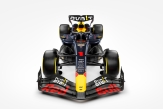
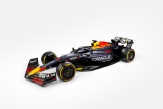

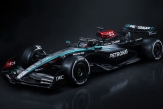
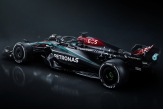


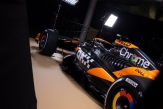

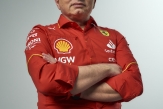
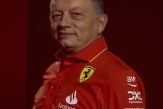
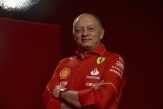

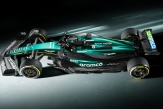

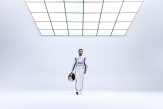


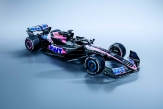
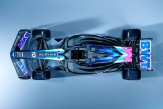

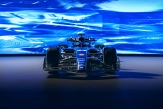
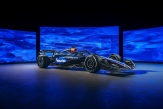
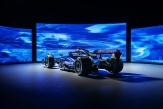
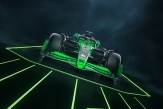
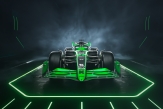
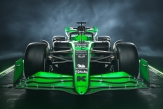

15/04/2024 от Огнян Тенчев (drJeckyll), няма коментари